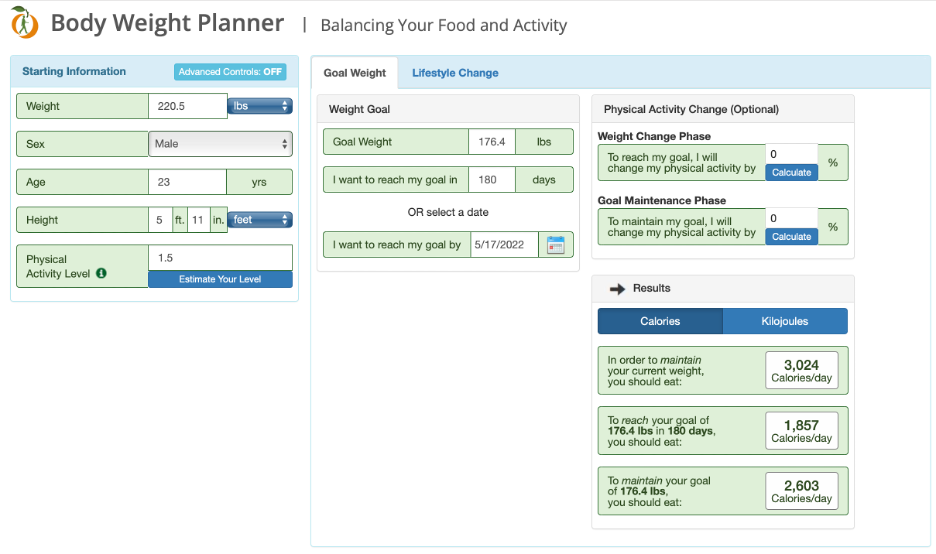

When working with clients who have dieted in the past, one of the most common experiences I hear is their frustration in regaining the weight they worked so hard to lose. And for most who diet, this is not an uncommon experience.
In fact, in an article published in the International Journal of Obesity, researchers analyzed 33 studies looking at people who had undergone combinations of dieting and exercise for weight loss. They found that participants regained, on average, approximately 50% of their baseline weight within one year (1).
So why does this happen? What makes keeping weight off so challenging, and is there any hope?
To answer these questions, we’ll explore how our bodies respond to weight loss, why it’s necessary to approach weight loss and weight-loss maintenance as distinct phases, and the two strategies you should use to prevent weight regain.
Let’s dive in!
How our bodies respond to weight loss
While we don’t have a set body weight per se, our bodies have evolved mechanisms that oppose changes in body weight (2,3). Many of these mechanisms are triggered by weight loss, and understanding how this happens is crucial (4).
Calorie restriction and the dreaded weight loss plateau
A common weight loss strategy is to reduce calorie intake such that the number of calories in is less than the number of calories out (expended). While this is a useful and often necessary short-term approach, it’s usually not sustainable.
What commonly happens is that energy imbalance at the start of the calorie restriction is most dramatic and leads to rapid weight loss. Over time, however, the body responds by increasing appetite and decreasing energy expenditure.
In fact, research shows that “for each kilogram of lost weight, calorie expenditure decreases by about 20 – 30 kcal/d… and… appetite increases by about 100 kcal/d above the baseline level prior to weight loss (5).”
As such, unless you exert Herculean amounts of willpower to overcome the increase in physical hunger, the imbalance between calories in and calories out narrows, leading to a slowing and eventual weight loss plateau – typically followed by weight regain.
Why appetite increases and energy expenditure decreases during weight loss
A negative energy balance and decreased fat mass can alter signals in the brain that affect behavioural responses to food while simultaneously reducing energy expenditure in an attempt to restore body fat (4).
Specifically, food may seem more rewarding, and it may become more challenging to resist tempting foods. It may also take longer to feel full, which can lead to eating more at meals (6).
Regarding energy expenditure, the body undergoes a series of adaptations in how it uses fuel during weight loss. In this process, there’s an increase in muscular efficiency, such that muscles can perform the same amount of work but use fewer calories (7). As a result, daily energy expenditure decreases as weight is lost, narrowing the gap between calories consumed and calories burned, contributing to a slowing of weight loss.
How to sustain weight loss
Our bodies adapting to weight loss highlights an important but often overlooked weight management concept – the need to approach weight loss and weight-loss maintenance as distinct phases requiring different behaviours to be successful.
Weight loss is a “temporary period of negative energy balance (8),” and weight-loss maintenance requires sustaining energy balance at a new, lower level.
Strategies for weight-loss maintenance
For most, losing weight isn’t the problem. However, trying to maintain energy balance at your new lower weight through calorie restriction alone is.
As we discussed, appetite increases and energy expenditure decreases during weight loss. Without a change in strategy to blunt the body’s response to weight loss, you’ll be at high risk for weight regain.
As such, there are two key strategies to use to maintain a new, lower weight.
Strategy #1: Eat more
The first strategy may sound counterintuitive, but it’s to increase your calorie intake slightly. Now that you’re in the weight-loss maintenance phase, you want to achieve energy balance at your new lower weight, which means increasing calorie intake.
You can estimate your calorie intake using the free Body Weight Planner. Your goal will tell you how many calories you should eat to reach your target weight, then how many calories you should eat to maintain that weight.
For example, a study by Hall et al. (9) showed that for a 220 lb man to lose 44 lb in six months, he would need to reduce his energy intake from 3,024 to 1,856 kcal/day. After reaching this goal, his energy intake should increase to 2,603 kcal/day to maintain his weight at 176 lb.
If you continue to restrict your energy intake to the same degree as during weight loss, you’ll still be in the weight loss phase, not the weight-loss maintenance phase. Plus, you’ll have to rely strongly on willpower to overcome the increase in appetite while battling a decrease in energy expenditure.
Strategy #2: Get moving
The second key strategy to maintain your weight loss is the addition of exercise. Studies have shown that while the differences in caloric intake between people who regain their weight and those who don’t are relatively small (can be as little as 100 kcal/day), those who maintain their new weight typically exercise more, often burning an additional 300 – 500 kcal/day during exercise (5).
So how much exercise is needed to maintain weight loss? The American College of Sports Medicine recommends engaging in 200 – 300 min of physical activity per week to prevent weight regain (10).
Table of Contents

The takeaway:
Weight loss triggers hormonal adaptations that affect appetite and energy expenditure. The key strategies to maintain weight loss are to increase calorie intake slightly and to aim for 200 – 300 minutes of physical activity per week.

References:
- Curioni CC, Lourenço PM. Long-term weight loss after diet and exercise: a systematic review. Int J Obes. 2005 Oct;29(10):1168–74.
- Sumithran P, Proietto J. The defence of body weight: a physiological basis for weight regain after weight loss. Clin Sci. 2012 Oct 31;124(4):231–41.
- Hall KD, Heymsfield SB, Kemnitz JW, Klein S, Schoeller DA, Speakman JR. Energy balance and its components: implications for body weight regulation123. Am J Clin Nutr. 2012 Apr;95(4):989–94.
- Aronne LJ, Hall KD, M. Jakicic J, Leibel RL, Lowe MR, Rosenbaum M, et al. Describing the Weight-Reduced State: Physiology, Behavior, and Interventions. Obesity. 2021;29(S1):S9–24.
- Hall KD, Kahan S. Maintenance of lost weight and long-term management of obesity. Med Clin North Am. 2018 Jan;102(1):183–97.
- MacLean PS, Wing RR, Davidson T, Epstein L, Goodpaster B, Hall KD, et al. NIH Working Group Report: Innovative Research to Improve Maintenance of Weight Loss. Obes Silver Spring Md. 2015 Jan;23(1):7–15.
- MacLean PS, Bergouignan A, Cornier M-A, Jackman MR. Biology’s response to dieting: the impetus for weight regain. Am J Physiol – Regul Integr Comp Physiol. 2011 Sep;301(3):R581–600.
- Hill JO. Understanding and addressing the epidemic of obesity: an energy balance perspective. Endocr Rev. 2006 Dec;27(7):750–61.
- Hall KD, Sacks G, Chandramohan D, Chow CC, Wang YC, Gortmaker SL, et al. Quantification of the effect of energy imbalance on bodyweight. Lancet. 2011 Aug 27;378(9793).
- Donnelly J, Blair S, Jakicic J, Manore M, Rankin J, Smith B. Appropriate Physical Activity Intervention Strategies for Weight Loss and Prevention of Weight Regain for Adults. Med Sci Sports Exerc – MED SCI SPORT Exerc. 2009 Feb 1;41:459–71.

- Julie Vossen
- November 27, 2021
Hi there! I’m a Holistic Nutritionist with a BSc. in Nutrition Science and a background in Chemistry. I have the great privilege of working with you to create a personalized wellness program. This is so exciting because we’re beautifully unique and have different needs.
Previous Blogs



